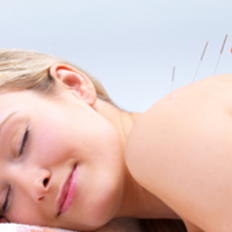
What Is Dry Needling?
Dry needling is a physical modality, similar to Acupuncture, that many trained physiotherapists’ use to optimize patient outcomes. It involves the insertion of fine, solid filiform needles into soft tissue. Dry needling is an effective and evidence based technique for the treatment of muscular spasm and pain.
Many patients have a positive effect following dry needling.
How It Works
The most common way to dry needle, is via myofascial trigger points (MTP), to treat myofascial pain and dysfunction. MTP’s are hyperirritable spots in the fascia and surrounding muscle. They are painful with palpation and feel like a taut band or bundle, often described as ‘knots’. By inserting a needle into a MTP there is a local stimulation which usually results in an increased contraction or twitch. When this subsides the muscle relaxes further than its previous state, therefore decreasing pain, spasm and dysfunction. Dry needling also causes micro trauma to the area, which increases blood flow and consequently bringing oxygen to the region, aiding the healing process.
What Problems Can Be Treated With Dry Needling?
Dry needling can be used for many musculoskeletal pain issues. These include back and neck pain, sporting injuries, overuse injuries and even cervicogenic headaches. Primary contributing factors to patient’s pain and symptoms are thought to be related to neuromuscular dysfunction and imbalances. By treating the muscles with dry needling there can be a reduction in the pain mechanism in the nervous system.
Acupuncture Vs Dry Needling
Acupuncture has been a part of eastern medicine for a very long time. It originated in China at about 100BC. It incorporates meridian pathways, channel therapy, and the movement and stimulation of Qi, the life force. Acupuncturists are almost always fully trained, traditional Chinese medicine practitioners.
Although similar, dry needling and acupuncture, are distinctly different modalities. Dry needling has been in western practice since 1938, and was originally based on Chinese acupuncture methods. Choosing to dry needle is based on a thorough musculoskeletal examination through movement and palpation of the symptomatic muscle or muscle group. Deciding to needle is based on the patient’s pain experience and associated muscle spasm. Placement of needles is kept locally to the affected area.
Dry needling is simply another therapeutic tool in your physiotherapist tool box. When used in conjunction with manual therapy and exercise based rehab patients can have a faster, less painful recovery.
If you have any questions or would like to book in to see our physiotherapist, please do not hesitate to contact Lockridge Physiotherapy on 08 62782555 or email us at warren.watts@lockridgegp.com
Book online!

